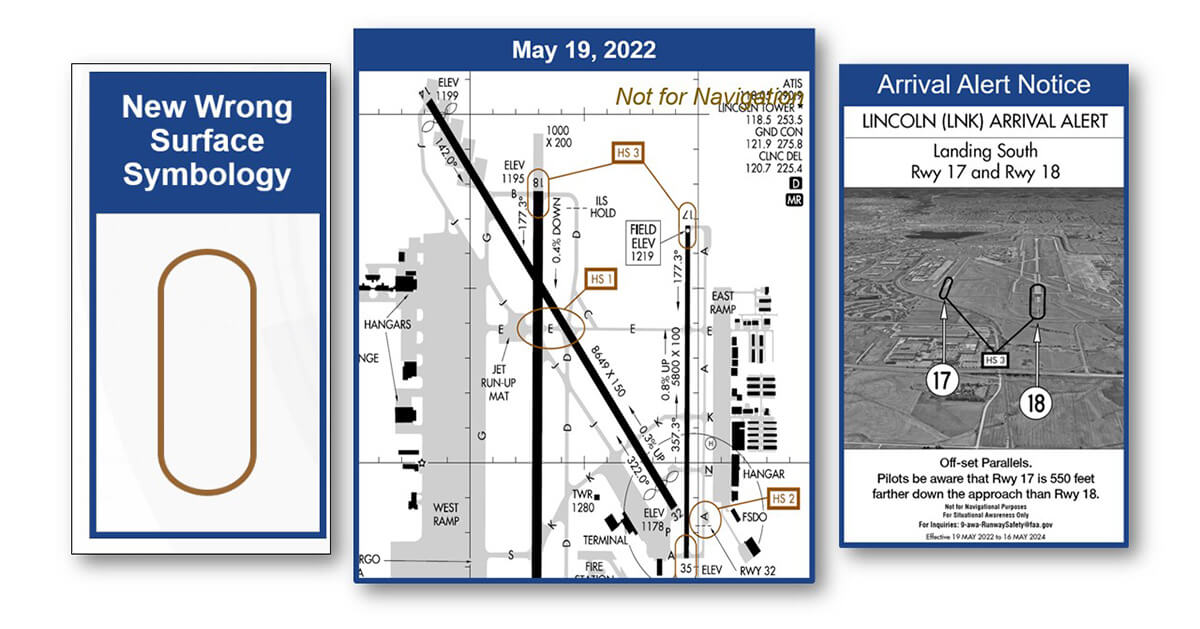
May 26, 2022
Newly standardized symbols on airport charts and diagrams highlighting potential hotspots for wrong surface incursions will help pilots avoid such incidents while taxiing and on approach to land.
“After reviewing airport diagrams and working with the pilot community and our industry stakeholders, we determined a need to standardize hotspot symbology into three shapes with distinct meanings,” said Raymond German, Jr., manager for the FAA Eastern Service Area Runway Safety Team.
With the May 19 charting cycle, circles or ellipses will now denote areas on the airport at risk for runway incursions, including hold-short areas, complicated taxiway layouts and portions of the airport surface out of view of tower controllers.
Cylinders will denote areas where pilots have attempted to land on, or depart from, the wrong airport surface. Additionally, arrival alert notices (AAN), found in the chart supplement, will provide graphical, “from the cockpit” guidance for 11 airports with high numbers of wrong surface events.
“These AANs are designed for situational awareness,” said Christine Madden, FAA runway safety program manager. “If there is a cylindrical shape at the end of a runway or taxiway, this points to a history or potential for runway confusion relating to departure or approach and landing operations.”
Since 2017, the FAA has recorded more than 1,300 incidents of an aircraft landing on the wrong runway, a taxiway or at the wrong airport. More than 80% of those incidents involved general aviation (GA) aircraft, with a similarly high percentage occurring in daytime visual meteorological conditions. Wrong surface departures are also a significant concern, with more than 275 incidents recorded over the past five years, 83% of which involved GA aircraft.
Alex Gertsen, CAM, and NBAA’s director of airports and ground infrastructure, noted business aviation may be particularly susceptible to wrong surface events given the industry’s mix of single- and two-pilot crews and its frequent use of a variety of different airports. It’s vital for pilots to utilize all the tools at their disposal to avoid such incidents.
“Reference the localizer or RNAV approach guidance to the assigned runway, as well as your electronic flight bag’s extended centerline display, to improve your situational awareness in visual conditions,” said Gertsen, who serves as the industry co-chair for the Surface Safety Group that developed these resources. “Similarly, pilots should reference airport diagrams and moving map displays to confirm their position and to avoid runway incursions and wrong surface departures.”
Proper communication between pilots and ATC also is key to reducing the chance for a wrong surface event, emphasized Bridget Singratanakul, national runway safety representative for the National Air Traffic Controllers Association.
“Make sure that you’re reading back the correct runway assignment, not only on final, but on your departures too, and your hold short assignments,” she said. “I have seen too many events in the past where the air traffic controller and the pilot were not necessarily on the same page. We are there to help.”


 International Business Aviation Council Ltd.
International Business Aviation Council Ltd.